The biological world has always been an important source of knowledge for human technological development. Animals have evolved over millions of years to develop characteristics that adapt to their environment. Humans have been inspired by these remarkable animal features, finding solutions to real-world problems in engineering, military, scientific research, and other fields. The application of biomimicry has greatly advanced human civilization, as seen in the design of ships based on the shape of fish or the design of aircraft wings modeled after bird wings.
Bionics involves designing and manufacturing more efficient machinery by imitating the movement patterns and body structures of biological organisms, integrating disciplines such as biology, biomechanics, medicine, mechanical engineering, automatic control, and electronic technology.
Bionics has rapidly developed in recent years and is widely used in military, scientific research, medical, and aerospace fields to replace or assist humans in extreme environmental tasks. For instance, the popular Boston Dynamics quadruped robots of recent years.
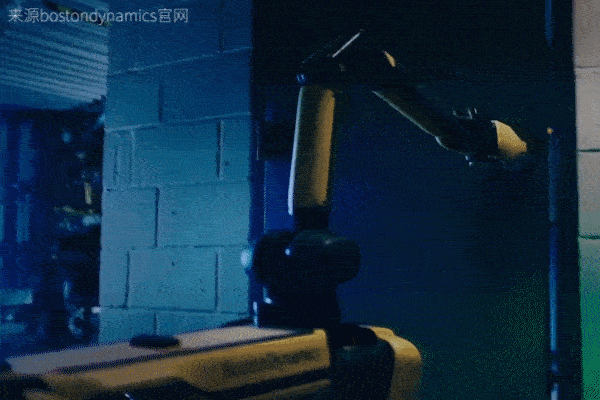
Technology company Festo has launched a variety of bionic robots as a comprehensive product line.
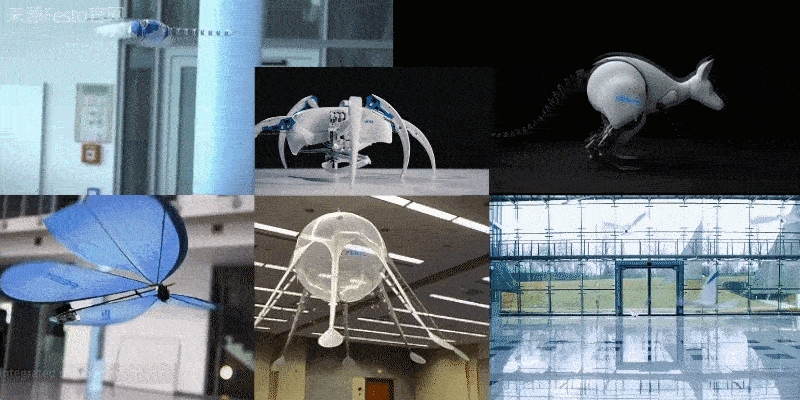
As research on animals deepens and scientific equipment continues to be upgraded, simply mimicking the form of animals is no longer sufficient to meet demands. Researchers have started to study the movement characteristics of animals.
Motion characteristic analysis is a prerequisite for the design of biomimetic devices. In order to obtain accurate motion data from animals, an increasing number of research teams are opting to use passive optical motion capture systems. In experiments, reflective markers are attached to the target object, and infrared optical cameras are used to capture the reflective markers. The motion data of the object is obtained by calculating and reconstructing the 3D spatial position information of the markers.
Researchers at Jilin University have been studying German Shepherds and have utilized eight optical motion capture cameras to capture the 3D spatial coordinates of the dog's joints in real-time. This provides reliable data for kinematic analysis. By analyzing the timing of different gaits, they aim to understand the kinematic characteristics of the German Shepherd's gait and quantitatively analyze the animal's motion stability. They are developing kinematic and dynamic calculation models for a quadrupedal robotic motion model that mimics a dog's movements. This work is intended to provide a theoretical basis for the biomimetic design and stability assessment of quadrupedal robots[1].
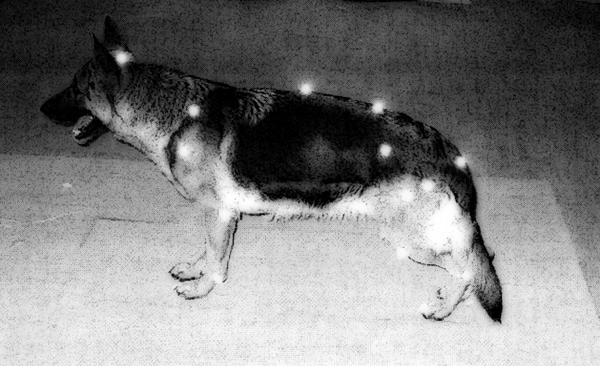
A research team from Jilin University focuses primarily on two types of silent owls, the Eastern screech owl and the barn owl, as their subjects of study. They analyze and compare the silent flight acoustics, wing and feather morphology, and the kinematics of flight of these owls. The team also conducts biomimetic research on the noise reduction characteristics of these owls, providing biological models for biomimetic noise reduction technologies.
In experiments with birds, reflective markers are attached to key parts of the wings, including the wrist joint, the base of the leading edge, and the base of the trailing edge of the wings. Using 3D motion capture cameras to locate these reflective markers, kinematic parameters of the flapping motion for species such as the Long-eared Owl, the Eurasian Eagle-Owl, and the Sparrowhawk are collected and analyzed. The study calculates the kinematic parameters (such as flapping frequency and joint angles) and their relationship to the flight trajectory (such as the wingtip path).
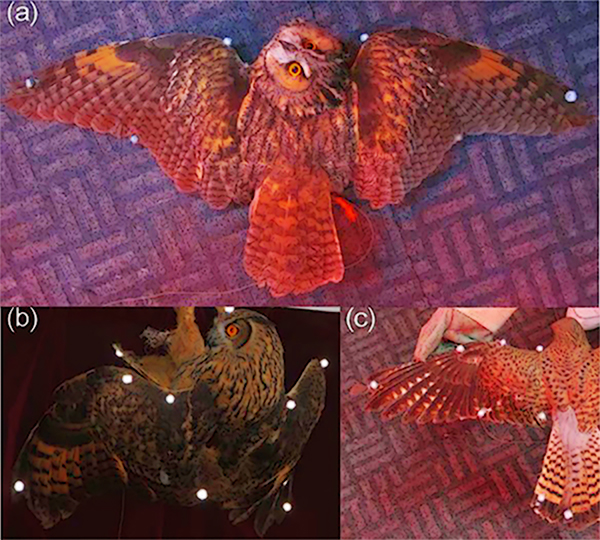
Researchers at Nanjing University of Aeronautics and Astronautics have studied the challenges faced by biomimetic dry adhesive robots in transitioning across surfaces with external right angles (such as the external transition over right angles on the surface of spacecraft cabins). In their experiments, 18 reflective markers were adhered to a large gecko, and four optical motion capture cameras were used to obtain the 3D coordinates of the reflective markers at the main joints of the gecko. A biological model was established to analyze the foot trajectories of each paw and the pitch, yaw, and roll angles of the waist joint.
The experiment yielded the range of motion for the hip joint of a large gecko during an external right-angle transition and the generation law of the foot trajectory. By studying the movement coordination mechanism of the gecko's external right-angle transition in depth, structural optimization was performed on the bioinspired dry adhesion robot, and based on biological principles, the robot's behavior of external right-angle wall transition in a simulated microgravity environment was realized.
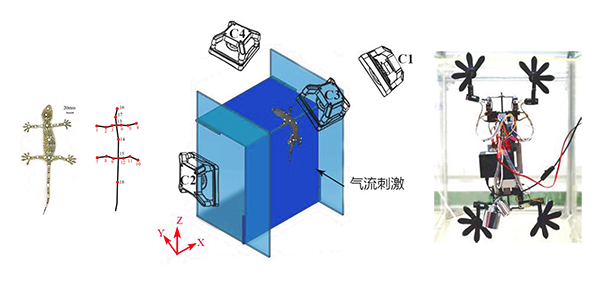
NOKOV Motion Capture Customer Case
Jilin University Weihai Bionics Research Institute
At the Bionic Research Institute of Jilin University in Weihai, researchers studying biological prototypes and mathematical modeling need to capture the postural information of lizards during movement. They attached reflective markers to the lizard's body and limbs and used the NOKOV optical 3D motion capture system to capture the movement. The post-processing module computes the 3D motion trajectories of the lizard's feet and spine, body sway angles, and the velocity and acceleration during movement. The researchers can then use these characteristic points to establish a mathematical model of the lizard's motion.
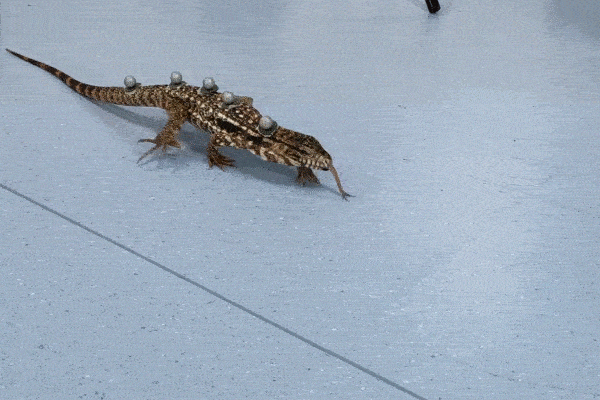
References
[1] Tian Weijun. Research on the Movement Characteristics and Motion Model of German Shepherd Dogs [D]. Jilin University, 2011.
[2] Chen Kun. Morphological and Flight Kinematics Characteristics of Three Owl Species and Their Biomimetic Study [D]. Jilin University, 2012.
[3] Liu Qi. Biomimetic Study of Gecko Adhesion Contact Area and Behavior Over External Angles [D]. Nanjing University of Aeronautics and Astronautics, 2019.